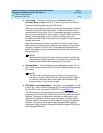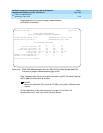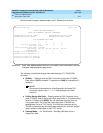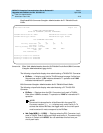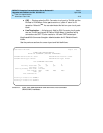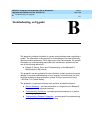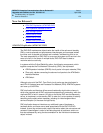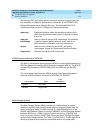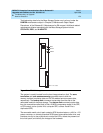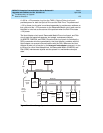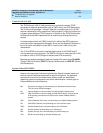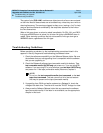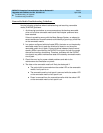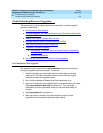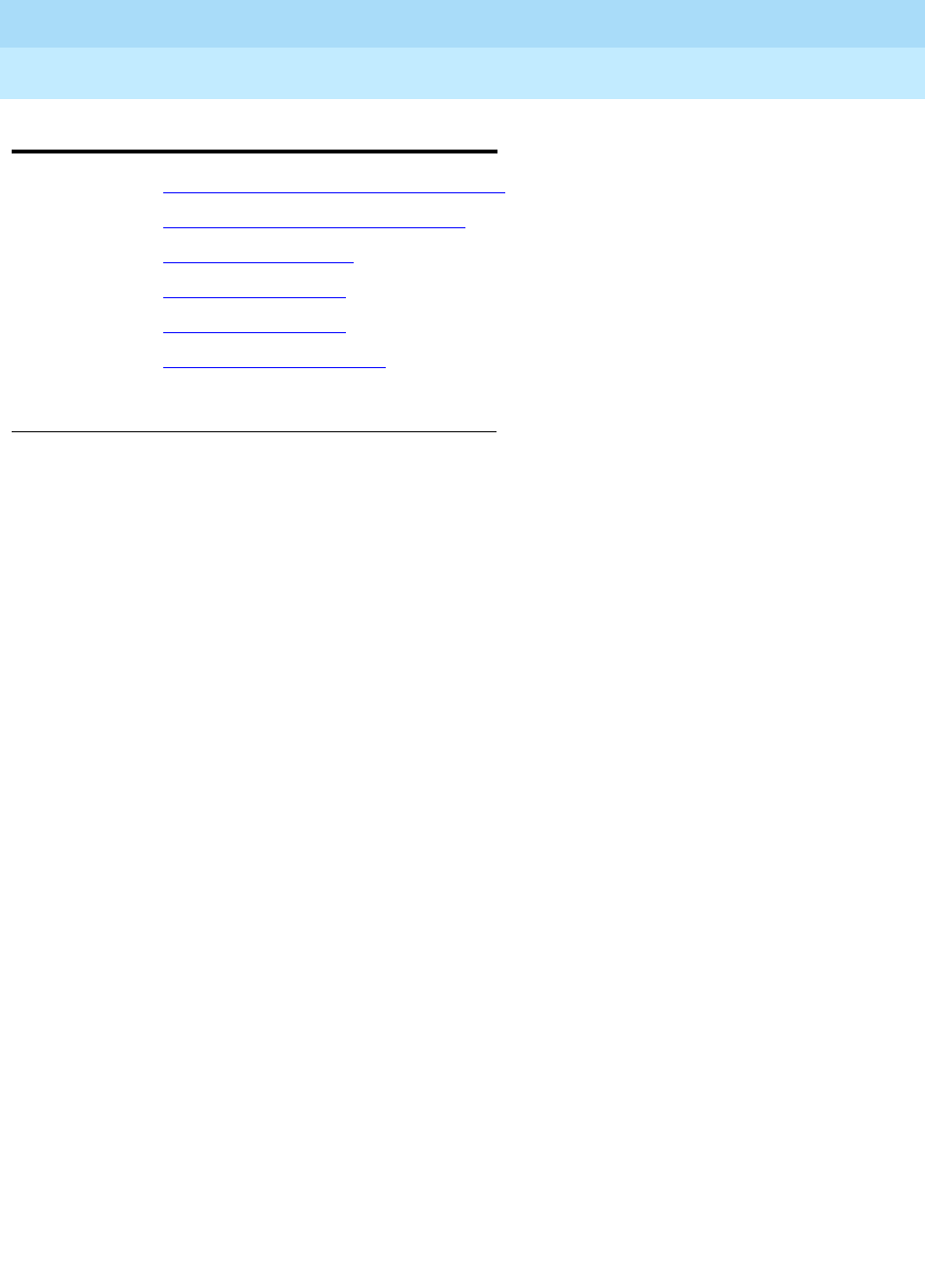
DEFINITY Enterprise Communications Server Release 8.2
Upgrades and Additions for R8r
555-233-115
Issue 1
April 2000
Troubleshooting an Upgrade
B-2New for Release 8
B
New for Release 8
■ ATM PNC Duplication (ATM PNC-DUP)
■ ATM Expansion Interface (ATM-EI)
■ Mass Storage System
■ Control LAN (C-LAN)
■ Control LAN (C-LAN)
■ System Links (SYS-LINK)
ATM PNC Duplication (ATM PNC-DUP)
The PNC-DUP maintenance object tracks the health of the active and standby
PNCs, controls planned and spontaneous interchanges, and manages related
functions such as double call refresh and unrefresh, antithrashing, and so on.
The main responsibility of PNC-DUP is to recover the system to full service in the
event of a fault. In the event of multiple faults, PNC-DUP does its best to
maximize service continuity.
In systems with the Critical Reliability option, the following components, which
together comprise the Port Network Connectivity (PNC), are duplicated:
■ ATM-Expansion Interface (ATM-EI) circuit packs in the port networks (PNs)
■ Fiber-optic cables connecting the above circuit packs to the ATM Switch
Interface Modules
■ ATM Switc h
Although not part of the PNC, Tone-Clock circuit packs are also duplicated in
each PN. All systems have one Processor Port Network (PPN). ATM PNC systems
can have up to 43 EPNs.
PNC duplication architecture utilizes an active/standby duplication scheme in
which one complete set of PNC components supports call processing, while the
duplicate PNC is held in reserve. All calls on the active PNC are simultaneously
set up, or shadowed, on the standby PNC in order for it to be capable of instantly
assuming active status when necessary, allowing for interchanges without
service disruption (in the case of single faults).
PNC duplication does not introduce any additional types of hardware or
hardware faults, and there are no tests associated with the PNC-DUP MO.
Instead, its error log entries contain useful information about the occurrence and
causes of interchanges in order to facilitate diagnosis of problems, which can
then be addressed by using the documentation for the individual maintenance
object involved.



